By Kamal Shah
In a wide-based interview, the Chief of Army Staff General Manoj Pande elaborates on the giant strides the army has taken in the process of modernization through the harnessing of cutting-edge technology and the upgrading given to indigenization through the initiatives set in the Atmanirbharta Doctrine. The multiple moves being made today as investments in different disciplines will strengthen the army’s fabric for the future and make it a totally self-reliant force whose firepower will not be dependent on imports. Whether it is drones in warfare, upgrades in artillery and armour or missile firepower the Indian Army is on the job.
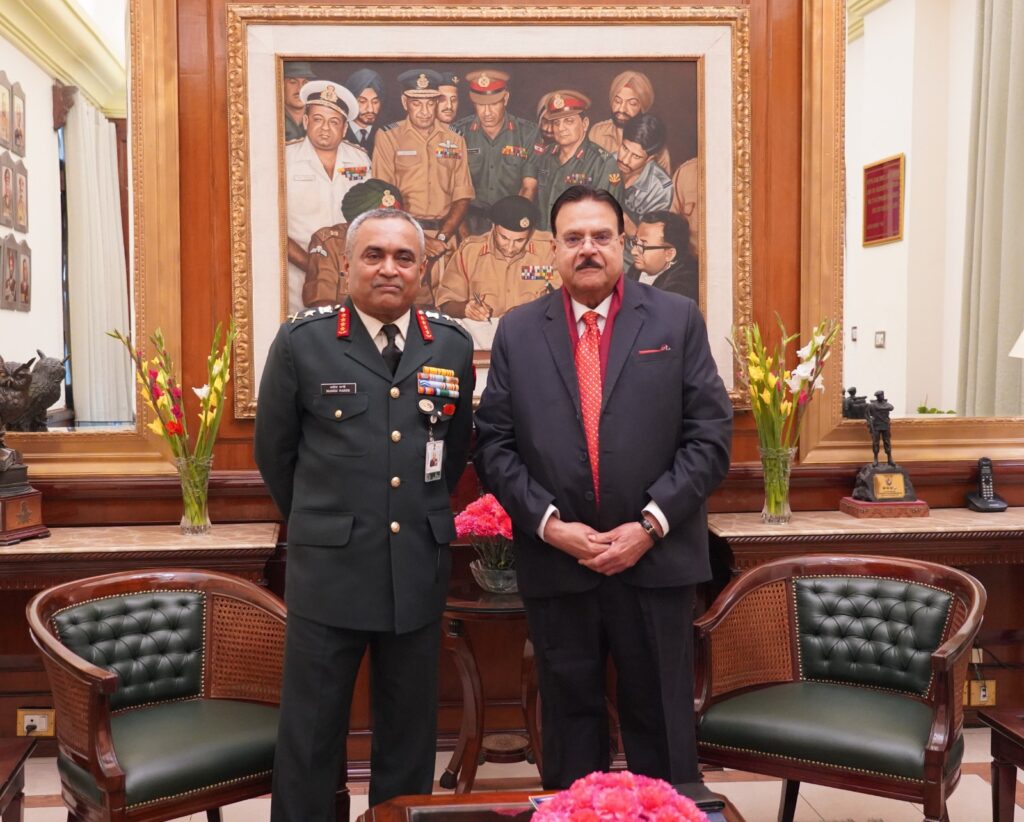
Q. What has been achieved in terms of ‘Modernization & Technology Infusion’ in the recent past?
Modernization & technology Infusion is an important pillar of the five processes of ongoing transformation, for which our endeavours firmly stand committed to Atmanirbharta. A roadmap has been put in place for Upgrades, New Acquisitions and infusion of Niche technology. We have decided to observe the year 2024 as the “Year of Technological Absorption”. However, a focused approach is being followed to ensure that the right balance is maintained between ‘Conventional’ and ‘New’ capabilities.
A total of 86 Capital Contracts worth Rs 12,725 Crore, all with Indigenous vendors concluded in FY 2023-24 have been concluded in the current Financial Year. In addition, 20 Acceptance of Necessity have been accorded for an amount of about Rs 20,000 Crores. This will boost our capability in the domain of mobilization, firepower, communication/non-communication, Intelligence, Surveillance & Reconnaissance (ISR) & Drone/Counter-Drone Systems.
Four contracts worth Rs 70 crore have been finalized this year through iDEX, paving the way for the induction of Niche Tech in communication, ISR & stealth Technology. It is also a step towards providing impetus in developments favourable to the indigenous defence ecosystem.
We have identified 45 niche technologies in various domains for adoption in military applications. Some of the key areas that we are focussing on are Artificial Intelligence, 5G, Robotics, Cyber and Quantum Communication. To take these projects ahead, we have established Centres of Excellence at selected locations in collaboration with premier institutions like IITs.
Indian Army has defined its policy guideline, named ‘Leveraging AI in Indian Army’, which spells out the guidelines for establishing an institutional structure for adoption of AI. Nodal agencies, their charter, delineated responsibilities and linkages between various stakeholders have been articulated.
The first AI laboratory was established at the Military College of Telecommunications, Mhow, in 2018. It functions as Indian Army’s Centre of Excellence with a vision to create an AI enabling environment through developing AI based solutions for battle space dominance, promote R&D culture and developing skill set enhancement to handle AI tools. It also functions as a single point of collaboration with researchers and industry, towards finding solutions to field army’s requirements. An AI compendium with 31 problem statements has been shared with the industry and academia.
Incubation and development of projects are on, under four domains of Machine Learning, Computer Vision, Natural Language Processing and System Integration. 37 projects under these domains are being pursued. These include AI systems for ISR, Threat Modelling, Swarm Drones, Satellite Imagery Analysis, Natural Language Processing, Facial Recognition, Video Analytics, Vehicle Tracking, Logistics and Healthcare.
As part of Autonomous Systems and Robotics, we are pursuing projects like Robotic Surveillance Platform, Autonomous Combat Vehicle, Unmanned Combat Vehicle and Manned Unmanned Teaming Solutions.
We are reaching out to Academic Centres of Excellence like IITs for incubation and fostering of innovations, customized training and accreditation, and establishing patents of defence research products.
The integration of Internet of Military Things with 5G is being carried out in the fields of Smart Surveillance, Telemedicine, Drone Control and Real-Time Augmented and Virtual Reality.
In the Cyber domain, we are pursuing IP Encryptors for Satellite Communication, Mobile Secure Satellite Terminals and the development of in-house Applications.
Apart from the above, we are also progressing well towards leveraging modern RPA systems, Loiter Munitions, Adaptive manufacturing and futuristic communication systems.
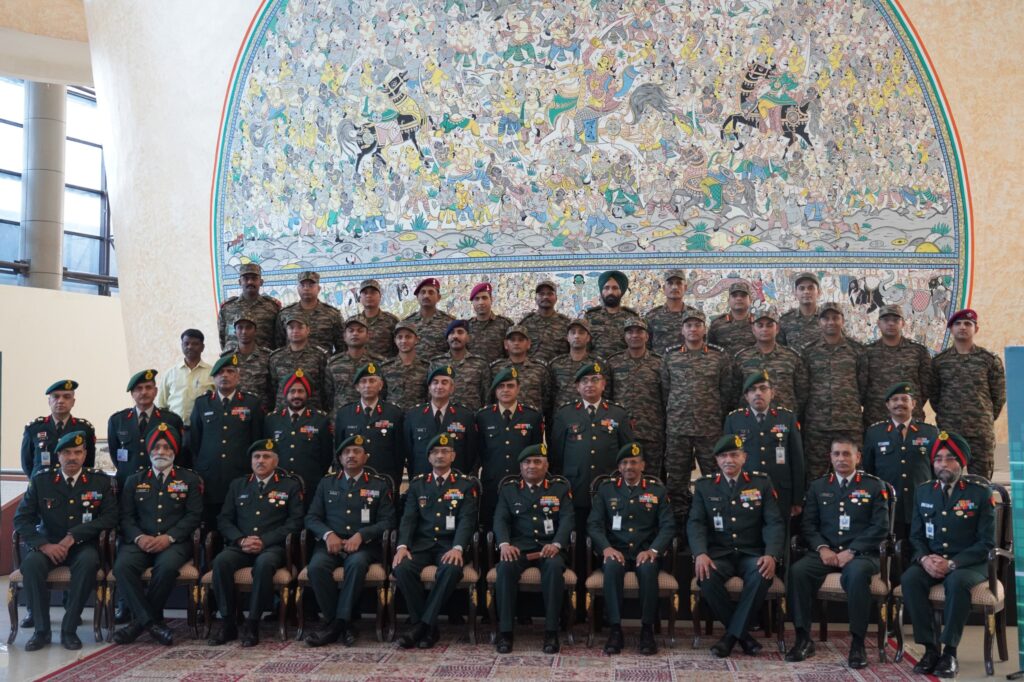
Q. How is Indigenization or Atmanirbharta advancing in the Indian Army?
Our commitment to pursue our capability development on the edifice of Atmanirbharta, stand firm, and we have made good progress, over the past one year. A positive ecosystem is available in the country to catalyze the process. The Military – Industry – Technology ecosystem is thriving because of the availability of four favourable building blocks in India. These building blocks are Resource Allocation, Enabling Government Policies, Viable Markets and Competition.
The empowering actions by the Government such as Positive Indigenisation lists, earmarking the R&D budget, corporatization of Ordnance factories, emphasis on defence exports and establishment of defence corridors are catalyzing the process of achieving Atmanirbharta in the field of defence.
Indian Army has undertaken numerous initiatives to promote indigenous Military-Industry. Army Design Bureau has reached out and found traction with MSMEs, Start Ups, R&D organizations & Academia. Indian Army Regional Technology Nodes have been established at Pune & Bengaluru.
Indian Army Cells have been co-opted in IIT Delhi, IIT Kanpur & IISc Bengaluru to foster research in niche domains. So far, the Indian Army has incubated 30 Start Ups. Problem Definition Statements as seen by the Indian Army have been shared with the industry to align with their own requirements.
Indian Army has been ‘Handholding’ the Indigenous Military Industry. Assistance is being provided for trials, testing & certifications, provisioning of service equipment for R&D, NOC for exports, besides promoting products through military diplomacy. Parallel Modes of Development through MAKE, iDEX, Tech Development Fund & ATB routes are also being channelized.
Indian Army was the first to mentor Start-Ups like ‘114AI’ and ‘New Space’. We are looking to scale up such Start-Ups to compete in the global market. Their creativity & talent have been adequately showcased during various events like Def Expo. In House Ideas & Innovations have been shared with the industry. Two projects, AI-enabled IoT and Bio-Medical Device are under transfer to Start Ups for mass production.
The Indian Defence Industry is also rising up to the challenge and has invested significantly into research processes & modern production techniques. We are looking for the fructification of 230 contracts by 2025, with an outlay of Rs 2.5 lac crores involving 340 indigenous defence industries.
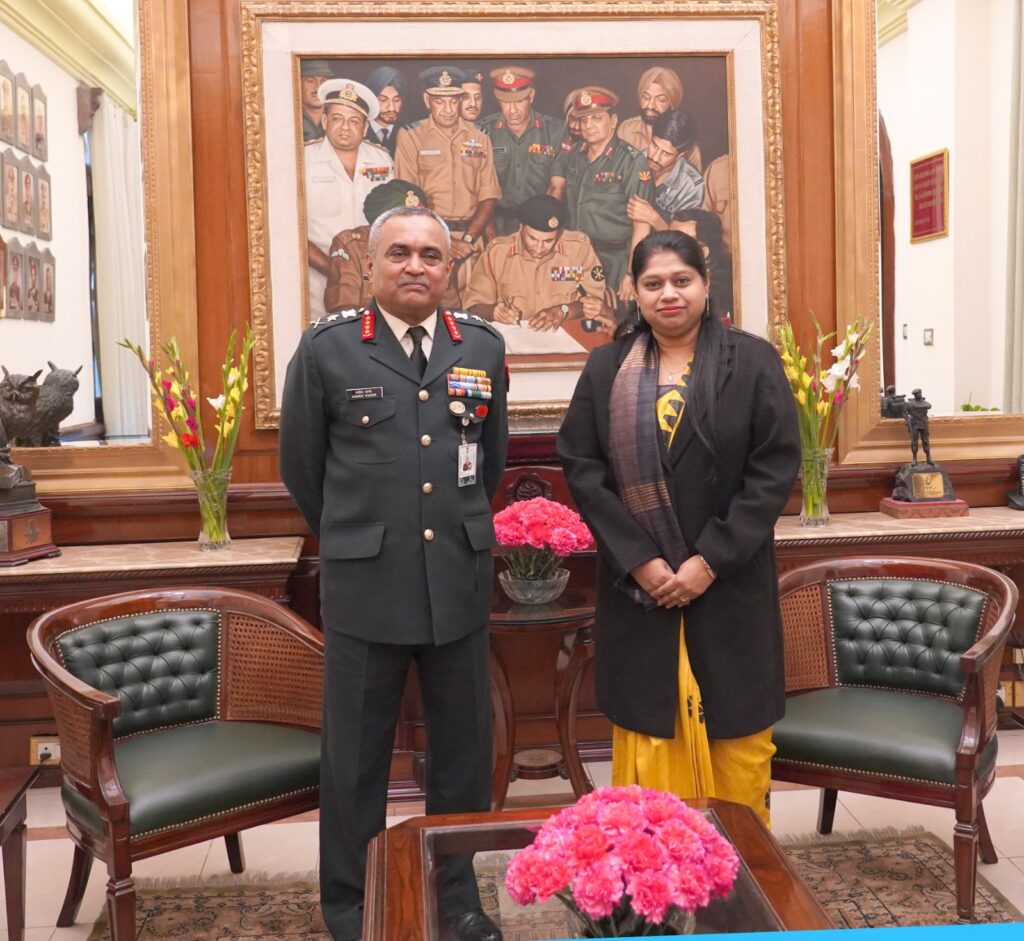
Q. The Indian Army is reaching out to other Ministries to augment its capabilities. Can you elaborate upon the contours of collaboration with MeitY, especially in the fields of 5G domain?
(Inputs recieved from DG Info Sys, suitably amended by ADG SC)
Indian Army has collaborated with the Ministry of Electronics and Information Technology (MeitY) to infuse cutting-edge technology and digital infrastructure into the very core of the Indian Army’s operational framework.
Collaboration with MeitY encompasses exchange of Best Practices on Hardware & Data Security, Assistance during procurement or identification of embedded malware, capability building in Cyber Forensics, Software development, Audit of India Army Data Centres, Standardization Testing & Quality Certification and training of Indian Army personnel at NIC.
MeitY is also assisting Indian Army in reaching out to Academic Centres of Excellence, like IIT, for incubation and fostering of innovations, customized training and accreditation and establishing patents of defence research products.
Towards collaboration on the Integration of 5G, an MoU has been signed between Military College of Telecommunication Engineering (MCTE) & DG SAMEER (Society for Applied Microwave Electronics, Engineering and Research) for the creation of three 5G labs.
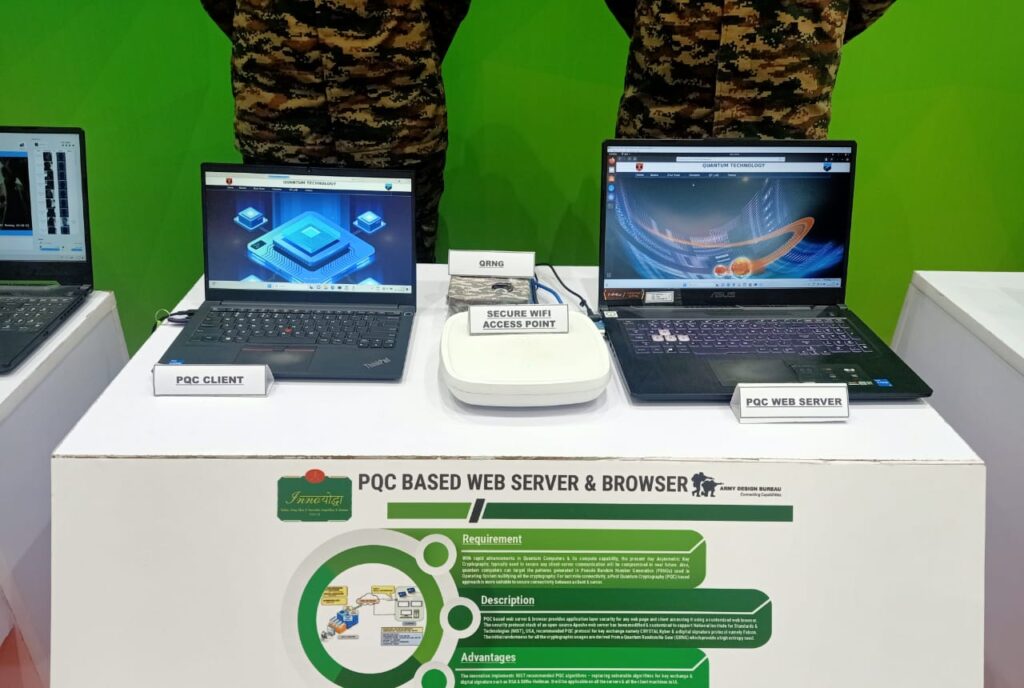
One Laboratory is being established at MCTE to act as Research Centre for Indigenous tech adaptation for military needs as well as, for indigenous Design and Development of security protocols. Two more Laboratories are being established at Signal Training Centres for functional training of personnel in handling 5G and migration from 2G/3G. This collaboration will also assist in building an end-to-end 5G military stack and set up 5G secure, intelligent & advance communication solutions at military band to power digital era decisions.
The association will further tap emerging 5G communication solutions and customize next-generation technology for military applications, to provide fail-safe communication backbone with the next-generation communication platform as a force multiplier. This will facilitate a seamless flow of a colossal amount of data.
Q. In the near future, do you think the Army Design Bureau working along with the Indian Defence manufacturing companies will be able to fulfil all requirements of the Army?
Indian Army has evolved numerous processes to identify its capability development focus through the absorption of technology. The Army Design Bureau (ADB) is central to this entire effort.
The ADB is always scouting for niche technologies and new solutions for the Indian Army both domestically and globally. The global technological scan helps in evolving Problem Statements for the indigenous solutions to be developed by academia, industry and DRDO.
In February 2023, the ADB had prepared a Compendium of Problem Definition Statements (CPDS) with 110 Problem Statements (PS) which was released during the Aero India by the Hon’ble Raksha Mantri.
There has been an overwhelming response to this CPDS wherein the defence manufacturing companies as well as the academic institutions have offered 462 proposals to the 110 PS. Various R&D /D&D projects are being initiated to convert proposals into real solutions.
In addition to this, the ADB is taking many more initiatives like optimal exploitation of the R&D provisions, the conduct of No Cost No Commitment evaluation of comparatively ready technology and continuous engagement with the defence research, development and production ecosystem to address its capability enhancement needs.
These are some of the positive indicators that the Indian Army, through ADB, will be able to galvanize not only the defence manufacturing companies but the entire defence ecosystem to fulfill all technological absorption requirements.
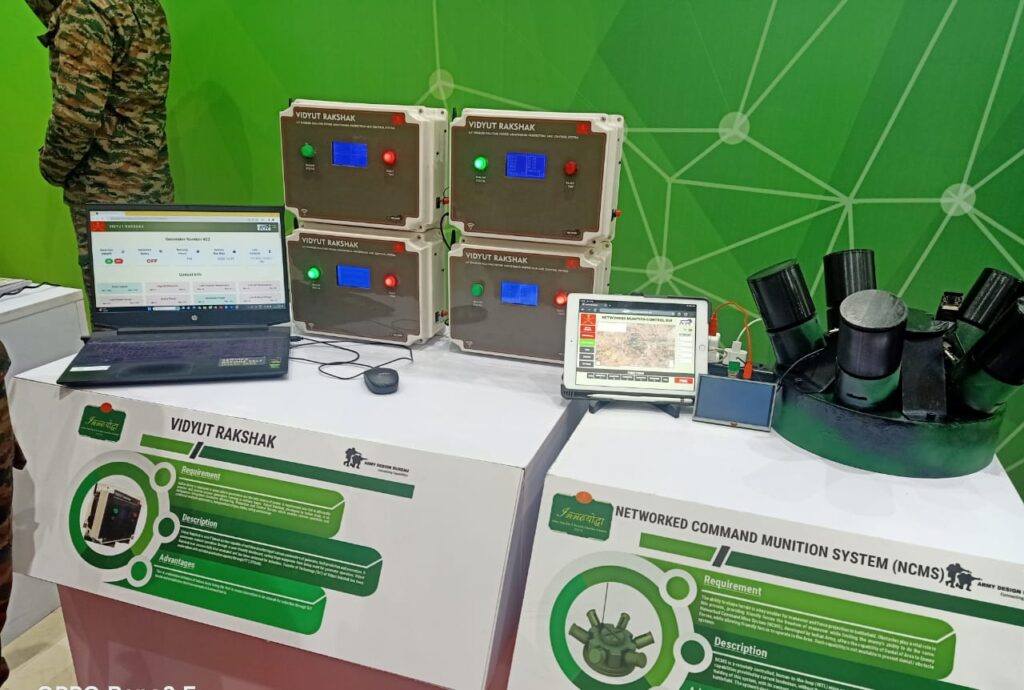
Q. Advent of drones has emerged as a game-changer in the current scenario. How is Indian Army progressing towards increasing the Drone inventory?
Drones offer a range of operational benefits achieving surveillance and strike capabilities without endangering the lives of soldiers while achieving precision targeting. Indian Army has been closely monitoring conflicts around the world and is mindful of the dynamic evolvement of drones in the battlefield.
We have formulated a multi-pronged strategy as part of force modernization to achieve drone capabilities. Indian Army has procured varied state-of-the-art drones. The entire range of drones are being inducted into the inventory starting from micro and mini drones to MALE/ HALE category drones.
Drone systems are being designed and developed by indigenous defence industries including MSMEs. Aggressive R&D by DRDO and DPSUs are also progressing well to ensure sustained capability.
Acquisition of drones by joint venture with global entities to remain relevant till own industry becomes robust in this field has also been undertaken. IA has procured large quantities of long-range drones Loiter Munitions, RPAs, Tethered Drones and Swarm Drones to equip frontline soldiers with surveillance, targeting and logistics capability.
The acquisition has been planned to enhance the capability at all levels, starting from nano/micro and hand-held drones for a battalion of High-Altitude Long Endurance (HALE) drones.
Q. Artillery modernization is being undertaken. What all has been achieved and what remains to be done including having a deep strike capability?
The modernization of Regiment of Artillery is focused on the enhancement of Firepower and Surveillance and Target Acquisition capability. The aim is to achieve enhanced, integrated and networked firepower with cutting edge Intelligence, Surveillance and Reconnaissance (ISR) capacities. The future Artillery Firepower Profile will comprise 155 mm Gun Systems besides Long Range Multi Launcher Rocket Systems or Missile Systems.
In the recent past, Indian Army has concluded contracts for procurement of 155 mm/ 39 Calibre Ultra-Light Howitzers, 155 mm/ 45 Calibre Dhanush Gun System, up-gunning of existing 130 mm Guns to 155 mm/ 45 Calibre and 155 mm/ 52 Calibre Self Propelled (Tracked) Gun System K-9 Vajra-T. These Gun Systems have been inducted or are under induction. Nearly 47 Artillery Regiments have already been equipped with these systems, while progressively phasing out vintage Guns.
In terms of long-range Rocket System, more numbers of Pinaka Multi Launcher Rocket System with a range of 75 kms are planned to be inducted. This will complement the inventory of existing Pinaka Rocket System, Smerch Rocket System and BrahMos Missile System, giving us substantial deep strike capability. It is heartening to note that all these systems, less the Ultra-Light Howitzer, are indigenous systems.
We are also progressing well towards indigenous development of Advanced Towed Artillery Gun Systems, commonly known as ATAGS, and Mounted Gun Systems.
We are also aiming to enhance our precision strike capability of Indian Artillery by procuring suitable ammunition. Indigenous development of Terminally Guided Munitions, Precision Guided Kits for 155 mm ammunition and Loiter ammunition is also being pursued. For rockets, indigenous development of Area Denial Munitions and Guided Extended Range rocket ammunition is also under progress.
Surveillance and Target Acquisition (SATA) capabilities are planned to be enhanced. Towards this end, we are not only restructuring our SATA units but also pursuing procurement of indigenous Long Range Electro-Optical Devices and Battle Field Surveillance Radars.
Indian industry is also being encouraged to develop indigenous technology for ground-based surveillance systems and aerial observation systems. Weapon Locating Radar SWATHI, developed indigenously has been successfully inducted into the service. Besides above, Meteorological Systems and Differential Global Positioning Systems are also being inducted to improve the accuracy of artillery fire.
Q. What are the major defence co-operation initiatives undertaken by the Indian Army?
In keeping with India’s rising global stature in recent years, there has been a considerable increase in Defence Co-operation activities undertaken by the Indian Army. Currently, Indian Army is engaging with 110 countries through defence cooperation activities. This helps Indian Army in playing a crucial role in developing bilateral ties.
Joint Exercises form a flagship activity of our defence cooperation. The Indian Army is participating in 39 exercises, out of which Indian Army is lead Service in 28 exercises. Indian Army holds bilateral Army level Staff Talks with 19 countries. Presently there are 26 Indian Army Defence Wings located all over the world. Four new Defence Wings are being opened shortly at Mozambique, Algeria, Poland and Ethiopia; while more defence wings are under consideration.
In addition, Indian Army is constantly striving to enhance military and military-industrial cooperation with the countries of immediate & extended neighbourhood, Africa, Indo-Pacific and South America.
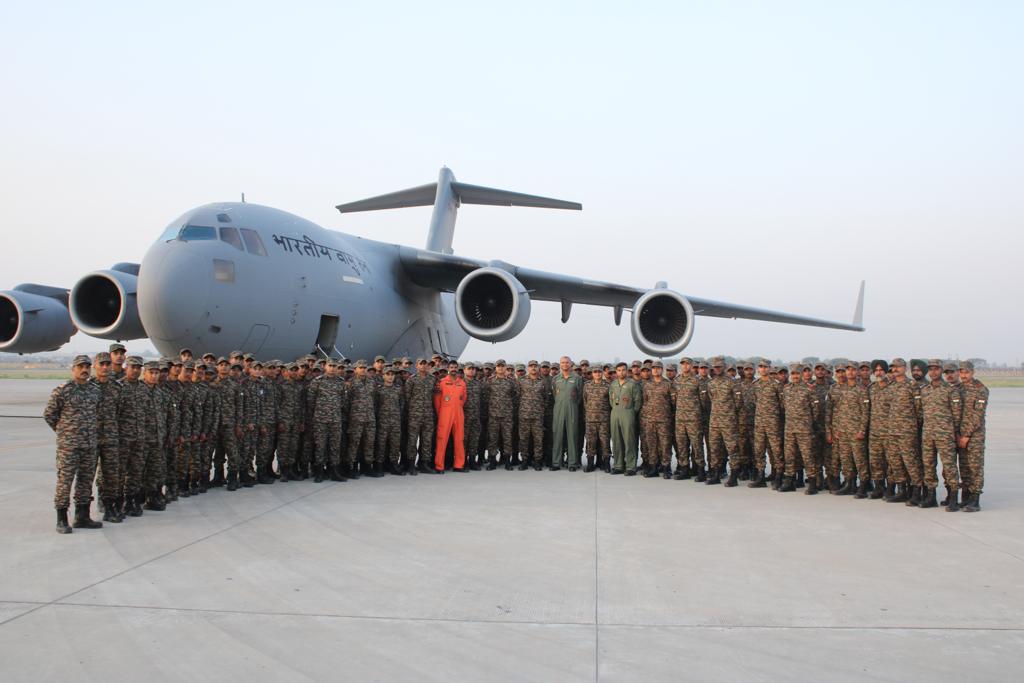
Indian Army is also playing a crucial role in promoting Multilateralism by conduct of multilateral engagement activities. In last one-year, major initiatives undertaken by Indian Army towards this include: Inaugural India Africa Army Chiefs’ Conclave (IACC) and AFINDEX at Pune in March 2023 with participation of 31 countries; Indo-Pacific Armies Chiefs Conference (IPACC), Indo-Pacific Armies Management Seminar (IPAMS) and Senior Enlisted Leaders Forum (SELF) which was co-hosted by Indian Army & US Army in Delhi in September 2023 with participation of 30 countries.
Indian Army contingent also led the Tri-Services marching contingent participating in the Bastille Day Parade 2023 at Paris in France. The event was witnessed by Prime Minister Shri Narendra Modi as the Chief Guest. It was the second representation of Indian Army in Bastille Day Parade after 2009.





